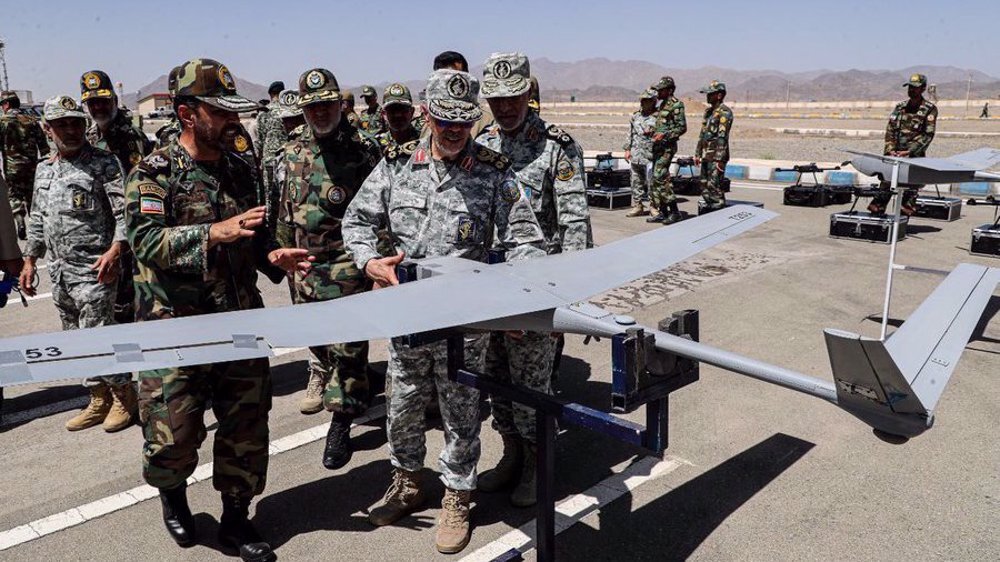‘An army built on drones,’ top commander affirms as Iran unveils new UAV technologies

TEHRAN – The Iranian Army has unveiled three advanced, domestically developed drones designed to meet the demands of modern and future battlefields.
The new models—Homa, Dideban (Watchdog), and Shahin-1 (Falcon-1)—were showcased during a ceremony at the Army’s drone and air base in the southeastern city of Zahedan, underscoring Iran’s push to build a self-reliant, tech-driven military.
Equipped with vertical take-off and landing (VTOL) capabilities, the drones can switch to fixed-wing flight for greater range and efficiency. Designed entirely by Iranian engineers, the aircraft combine agility, intelligence, and precision to perform a wide range of reconnaissance and offensive missions.
Brigadier General Kioumars Heidari, Commander of the Army Ground Force, emphasized that unmanned technologies now lie at the heart of Iran’s military transformation.
“We’ve invested heavily in developing UAVs—from micro drones to large aerial platforms—because our vision is to build a force centered around these technologies,” Heidari said. “They allow us to meet the operational needs of tomorrow’s battlefields with greater speed and power.”
He added that these innovations will allow the Iranian Army to act with greater flexibility and effectiveness in modern combat scenarios.
The Homa drone can fly above 12,000 feet, is equipped with night vision, and doesn’t require a runway—making it ideal for stealth reconnaissance in electronic warfare environments. The Dideban is a compact, portable UAV with all-day visibility and multi-target monitoring capabilities. It’s designed to fly in coordinated swarms, enhancing battlefield intelligence and precision.
The Shahin-1 is a fast, first-person view (FPV) suicide drone intended to eliminate fixed and mobile targets with high maneuverability and lethal accuracy. Military officials describe it as a key component of Iran’s growing asymmetric warfare strategy.
The unveiling coincided with a visit by Major General Mohammad Bagheri, Chief of Staff of Iran’s Armed Forces, to the 88th Armored Division in Zahedan. Accompanied by Heidari, Bagheri reviewed the Ground Force’s latest technological advances and operational achievements.
“Our focus remains on building effective deterrence, strong defense, and lasting stability across the region,” Bagheri said. “The Armed Forces, especially the Ground Force, have achieved breakthrough successes by accessing high-end systems and next-gen technology.”
Bagheri also pointed to Iran’s growing proficiency in micro drones, which he said enhance the military’s ability to counter evolving aerial threats.
“Today, the production of micro UAVs has become an integral part of our defense strategy,” he noted.
Brigadier General Nozar Nemati, Deputy Commander of the Ground Force, said Iran’s modernization drive is rooted in long-term planning, scientific research, and a commitment to domestic innovation.
“By investing in strategic areas like unmanned systems, micro aerial vehicles, and AI-based platforms, we’ve positioned the Ground Force as a leader in adopting next-generation military technologies,” Nemati said.
Over the past decade, Iran has made substantial strides in building its own military hardware—ranging from drones and missile systems to electronic warfare platforms—enabling near-total self-sufficiency in key defense sectors.
Officials maintain that Iran’s military buildup is strictly defensive and non-negotiable.
“We will never hesitate to enhance our defense capabilities,” Iranian authorities have repeatedly stated. “Our missile and drone programs are designed solely to protect our sovereignty and deter aggression.”
Leader of the Islamic Revolution Ayatollah Seyyed Ali Khamenei has long called for continuous strengthening of Iran’s military, viewing defense readiness as essential to national independence and regional peace.
Leave a Comment